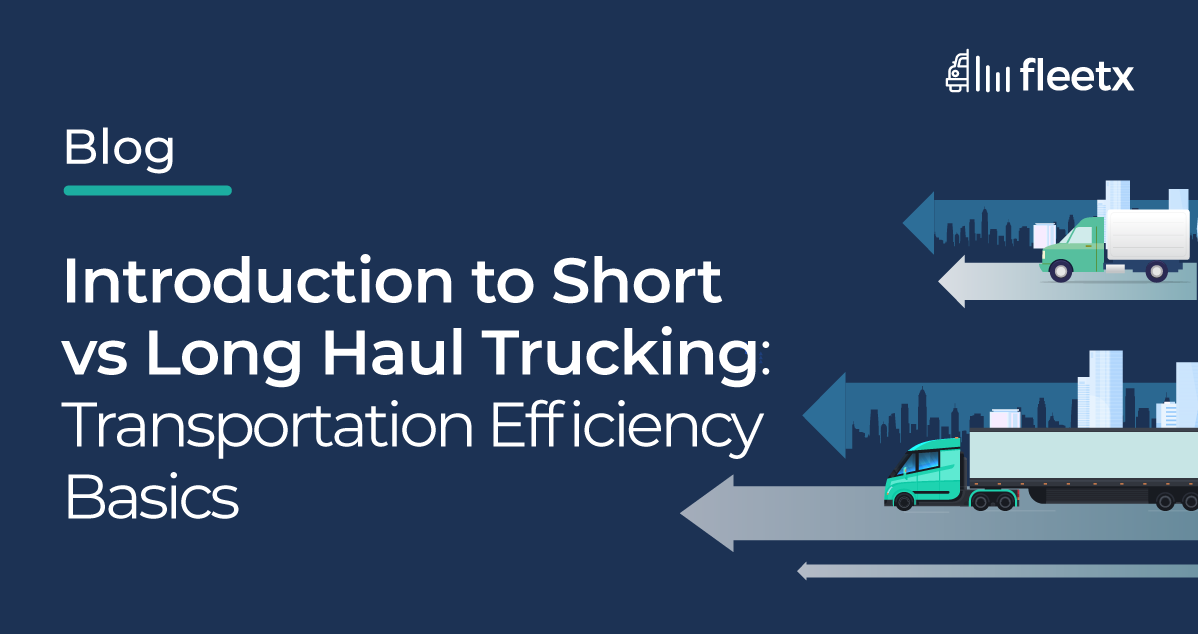
Short haul trucking, also known as regional trucking, is a transportation service that involves the movement of goods over relatively short distances, typically within a localized geographic area or region. This type of trucking service is characterized by deliveries that can be completed in a single day or within a few hours. Short haul trucking is commonly used for the transportation of goods between cities, towns, or distribution centers within the same metropolitan area or nearby regions. These services are essential for meeting local demand and maintaining a responsive supply chain.
Key Advantages
- Short transit times: short haul trucking offers quick turnaround times, where deliveries are often made on the same day that they are picked up.
- Reduced fuel consumption: as delivery distances are relatively small, short haul trucking generally involves lower fuel consumption, making it a more fuel efficient operation for small fleet owners.
- Service multiple industries: short haul trucking can cater to a wide range of industries, including retail, construction, manufacturing, and more, as it supports the rapid movement of goods within a local or regional context
Long haul trucking is a transportation service that involves the movement of goods over extensive distances, typically across state lines, regions, or even between countries. Long haul trucking is characterized by deliveries that require several days or more to complete and can cover thousands of kilometers. It serves as a vital component of the globalised economy, facilitating the transportation of goods across vast distances.
Key Advantages
- Market Access: long haul trucking enables access to a broader customer base and larger markets, facilitating the distribution of products over extensive geographic areas.
- Economies of Scale: by transporting larger quantities of goods over long distances, long haul trucking often allows for economies of scale. This can result in reduced per-unit transportation costs, making it cost-effective for bulk shipments.
- Product Variety: long haul trucking can accommodate a wide range of products, from perishable goods to heavy machinery.
How to Decide Between the Two: A Strategic Approach
Choosing the right trucking service isn't just about selecting a route; it's about determining the trajectory of your business's success. The decision between short haul and long haul trucking holds the potential to shape your company's efficiency, profitability, and customer satisfaction levels. Therefore, it is important to tailor your services to meet the demands of the market, and play to your strengths. This will not only build brand reputation, but also ensure compliance while adapting to market shifts. Let's explore how to make that decision using a strategic approach.
- Define your business goals: Begin by clarifying your company's objectives. These are some questions that your organisation can consider: Are you aiming for rapid local deliveries or seeking to tap into broader markets? Are you looking for cost savings, increased market reach, or a combination of both?
- Analyze market demand: Study your target market's characteristics and demands. Are there ample short distance delivery needs within your local region? Is there potential for growth through long distance deliveries to wider geographic areas? Understanding market demand is essential to choosing a service that aligns with your revenue goals.
- Evaluate infrastructure and resources: Assess your existing fleet, drivers, and infrastructure. Are your vehicles suitable for long haul trips in terms of maintenance, fuel efficiency, and driver comfort? Similarly, do you have the resources to efficiently manage short haul deliveries, including routing and quick turnarounds?
- Calculate costs: Conduct a thorough cost analysis for both options. Factor in fuel costs, maintenance expenses, driver compensation, tolls, and potential regulatory compliance costs.
- Consider transit time and delivery: Consider about your target markets’ expectations. Are they more concerned with quick, local deliveries or are they willing to wait for longer distances? Assess whether your customers prioritize speed or reliability.
- Regulatory compliance: Familiarize yourself with the regulations governing driving hours, rest periods, and other legal requirements. Long haul trucking might involve stricter compliance rules due to extended driving hours, potentially leading to driver fatigue issues.
- Technological integration: Consider the role of technology in your decision. Advanced fleet management solutions can optimize routes, track vehicles, and provide real-time insights. This can be particularly useful for both short and long haul operations.
- Flexibility and adaptability: Evaluate how easily you can switch between short and long haul operations if market conditions change. Flexibility to adapt to evolving demands is a valuable asset.
- Competitive analysis: Research your competitors' services. Are they focusing more on short haul or long haul services? Identifying gaps in the market can help you position your company strategically.
- Risk assessment: Consider the pros and cons associated with each option. Long haul trucking might entail greater exposure to external factors like weather, road conditions, and potential accidents. Short haul trucking could have its own challenges like navigating local traffic and meeting tight delivery windows.
- Hybrid approach: Ultimately, there are several ways to run a business. Meaning, a hybrid approach is also possible! You could offer a combination of both short and long haul services if that is the better option for your company, thereby catering to a wider range of customer needs.
Comparing Operating Costs
While deciding between the two transportation services in question, a crucial point of consideration is the operating costs. Either decision will require financial considerations and will have an impact on your profit margins.
Short haul trucking: This service can be optimised for efficiency far more easily because of the short distances that fleet vehicles cover. These reduced distances lead to lower fuel consumption, a key contributor to cost savings.
Maintenance expenses also see a decrease due to the limited wear and tear incurred during shorter journeys. Swift turnarounds, minimal driver fatigue, and decreased regulatory compliance burdens further contribute to cost savings overall.
Long haul trucking: Long haul trucking, while potentially offering economies of scale (once the threshold has been crossed), demands a meticulous cost evaluation and higher capital costs to set up. The profits accessed from transporting bulk quantities across extended distances can be offset by high fuel consumption.
Furthermore, as a result of traveling across vast distances, vehicles will experience higher levels of wear and tear, necessitating the need for specialized maintenance to uphold vehicle performance. Long haul trucking however, holds the promise of greater profits if one is able to overcome the challenges of the logistical landscape.
The Way Forward
Our parting advice: While deciding between the two, a holistic comparison is essential. Calculate not only direct costs like fuel and maintenance but also consider your markets’demand, your ambitions, as well as the potential risks associated with each option. Evaluating these in the context of your fleet's capabilities and market demands is key to making informed decisions that ensure financial security and sustainable growth.


